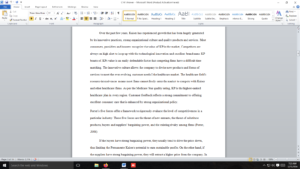Long-term health and viability
Organizations’ long-term health and viability are dependent on many factors, including the structure of the market the organization is competing in—and healthcare is no exception. Understanding the competitive forces in the industry will help in planning for the future. As discussed in this course, the more competition an organization faces, the more economic risk there is; and this makes long-term planning difficult.
Professor Michael Porter, of the Harvard Business School, has prepared a grid of the five forces of competitive advantage.
Based on a healthcare organization you are familiar with, prepare a report on the competitive forces affecting the organization using Porter’s five forces as your guideline.
Length: 10-15 pages, not including title and reference pages
Resources: Include a minimum of 5-7 scholarly resources related to your issue.
Requirements: 10-15 pages
Answer preview
Over the past few years, Kaiser has experienced growth that has been hugely generated by its innovative practices, strong organizational culture and quality products and services. Most consumers, providers and insurers recognize the value of KP in the market, Competitors are always on high alert to keep up with the technological innovation and excellent brand name KP boasts of. KPs value is an easily defendable factor that competing firms have a difficult time matching. The innovative culture allows the company to devise new products and forms of services to meet the ever-evolving customer needs I the healthcare market. The healthcare field’s resource-intensiveness means most firms cannot freely enter the market to compete with Kaiser and other healthcare firms. As per the Medicare Star quality rating, KP is the highest-ranked healthcare plan in every region. Customer feedback reflects a strong commitment to offering excellent consumer care that is enhanced by strong organizational policy.
[3174 Words]

Long-term health and viability

